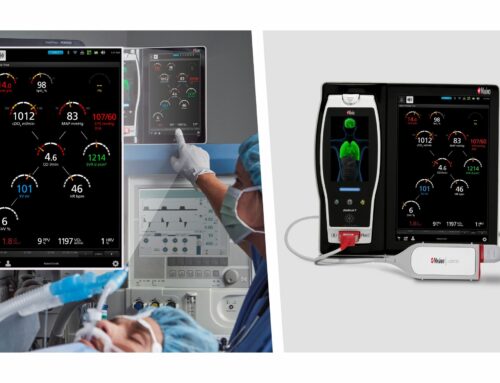By Jeremiah Robison, Founder and CEO of Cionic |
 As we investigate the future standard of care for people with mobility impairments, especially those caused by neurological injury or disease, it is first important to understand the current landscape of neurological disease, the number of people impacted, and the diverse set of needs.
As we investigate the future standard of care for people with mobility impairments, especially those caused by neurological injury or disease, it is first important to understand the current landscape of neurological disease, the number of people impacted, and the diverse set of needs.
According to the World Health Organization, “Over 1 billion people are estimated to live with some form of disability. This corresponds to about 15% of the world’s population, with up to 190 million (3.8%) people aged 15 years and older having significant difficulties in functioning, often requiring healthcare services.” Furthermore, The Centers for Disease Control and Prevention (C.D.C.) states, “61 million adults in the United States live with a disability.”
As our population ages and we are better able to diagnose and treat chronic disease, the number of people living with mobility impairments will continue to increase. That means more and more of us will either be diagnosed with or care for someone who has reduced mobility. The standard of care must evolve to consider the personal, social, and economic consequences, and work to provide greater functional independence.
We can break the current standard of care and landscape into four categories:
1. Treatment
For general mobility impairment, the current standard of care is quite basic – orthoses, walkers, wheelchairs – durable medical equipment (D.M.E.) that has been around for almost a century. Other treatments include pharmaceuticals, surgical procedures, and physical therapy. When you look at individual diseases like Parkinson’s Disease, standard of care includes pharmaceutical treatments such as Levodopa, which help to manage disease progression, but come with severe side effects, and a decreasing efficacy over time.
2. Costs
According to the C.D.C, “In 2015, disability-associated healthcare expenditures accounted for 36% of all healthcare expenditures for adults residing in the United States, totaling $868 billion.”
The costs for neurological injury and disease can be broken into two categories — direct, which are costs paid to the healthcare system, and indirect costs which are incurred by the individual as a result of the diagnosis, such as underemployment, mental health, and long-term care.
The majority of medical innovation has been focused on reducing direct costs while improving outcomes. As individuals live longer with these conditions, existing models of care have been slow to adapt, and individuals are taking on more of these direct costs.
When it comes to indirect costs, more and more people are diagnosed earlier and living with their condition longer. Underemployment is one of the big drivers of indirect costs. Even in cases where individuals do not lose their jobs, many step away or reduce hours to focus on treating their diagnosis. This often carries over into the family as well. Looking at raising a child with cerebral palsy (C.P.) alone, the C.D.C. explains, “Medical costs for children with cerebral palsy alone were 10 times higher than for children without cerebral palsy or intellectual disability ($16,721 vs. $1,674 in 2005 dollars).”
3. Additional Risks
One of the very important considerations for long term mobility impairment is the associated health risks, primary among them risk of falls. The costs from falls across the spectrum of aging are $50 billion annually, $30 billion of that to Medicare alone, another $10 billion to Medicaid, and it’s more pronounced in people with neuro-based mobility impairments.
Again, take Parkinson’s. Denise Padilla-Davidson, a Johns Hopkins physical therapist, told Johns Hopkins Medicine, “Movement, especially exercises that encourage balance and reciprocal patterns [movements that require coordination of both sides of your body], can actually slow progression of the disease.” Cognitive decline is another aspect. There is a much sharper decline in all the other aspects of whole-body health, with constipation and incontinence becoming major issues alongside cognitive impairments such as the inability to concentrate and focus. We have to think about the whole person. What are the risks, the overall impact to their body, their mind, their spirit, and their overall health?
4. Impact
Additionally, the pressure and psychological impact on the families is high. One of the families we met through our non-profit said the world is not ready for disability. They’re not ready to see, support, or celebrate these individuals. They can only focus on the disability, and we saw this very profoundly with our daughter, who was diagnosed with C.P. There was an assumption that because of her mobility impairment there must be some cognitive impairment as well. People will turn away because they’re uncomfortable. Numerous worldwide studies show discrimination and negative attitudes toward people with disabilities. Think about how isolating that can be, to have people view someone with a disability as less than, or as someone they don’t want to interact with. The natural inclination is to just stay inside in the comfort of one’s home, out of the public eye. It increases isolation, loneliness, and depression.
With the current standard of care in mind, there are three big factors that influence where this is going.
- Scale. It’s no longer a small percentage of the population, and we all have likely had direct experience with someone who has neuro and neuro-based mobility challenges. That personal connection creates interest and emotional energy. If you don’t help people age at home, the entire economy of the U.S. will be in managed care facilities. It is already one of the largest industries in the country. According to the U.S. Department of Health and Human Services Office of the Inspector General, “In 2015, Federal Medicaid managed care payments were approximately $161.8 billion, which was more than 40 percent of the $349.8 billion in total Federal expenditures for Medicaid.”
- Pay for outcome vs. pay for service. Up until recently, healthcare has been pay-per-service, not pay-per-outcome. If it was a pill, you paid per pill, if it was a procedure, you paid for the procedure. Now you’re seeing on the horizon people starting to think about outcomes. That catapults ideas revolving around different modalities and treatments that are not pharmacological or surgical in nature. Whether it is the growing number of digital therapeutics that leverage cognitive behavioral therapy or advances like ours at Cionic in neuromodulation, reimbursement will increasingly be tied to the clinical outcomes.
- Normalization. The conversation regarding disability is expanding. Organizations like the Michael J. Fox Foundation and the Christopher Reeve Foundation are encouraging open dialog about living with these injuries or diseases. The ongoing conversation sparks innovation and the increased size and scale of people’s awareness demands attention, which eventually leads to action.
The Future
How do we, as a community, evolve the standard of care to help these individuals continue to thrive at home and in the workplace so that they can age vibrantly?
First, we need to create new funding models that embrace the long cycles of meaningful human innovation that require regulatory oversight. We have already seen this happen in transportation, where technology companies are building self-driving cars, autonomous drones, among other breakthrough products, and the investment appetite around regulated spaces has increased. In doing so, we are able to bring more smart minds across a greater number of disciplines to bear on these important societal challenges.
Second, we need to marry the best of technology with the human expertise in care. For the first time in history, AI can understand what’s happening in the human body in a way that can complement, and augment what doctors and clinicians can do alone by providing 24/7 monitoring, surfacing patient insights, and optimizing the limited in-person interactions they have with each patient. Closed loop systems, like the one we are building at Cionic, will be able to precisely optimize treatment within the parameters set by clinicians, and communicate changes back to the care team in real time; not just at your 6-month checkup. You’re now able to have continuous, adaptive care that leads to a better overall quality of life—and consequently, drives down the cost of care.
Most importantly, we need to continue to foster an open dialog focused on whole patient care. The new standard of care should be increasingly driven by the goals of the individual. The challenge, of course, is that those goals are not always expressed quantitatively, but qualitatively. They are participating in the community and living independently. They are feeling seen and celebrated for who we are as people, rather than defined by a diagnosis.
Being part of this community is both incredibly exciting and humbling. Hearing the ability journeys of those living with neurological injury and disease, and to be working with the dedicated researchers and clinicians devoted to improving quality of life, fuels my motivation to build a future of continuous, precision, whole patient care.
 About The Author
About The Author
Jeremiah Robison is the Founder and CEO of Cionic, an innovative company that builds lightweight and durable bionic clothing driven by powerful algorithms that adapt in real time to each individual’s mobility needs. Since founding Cionic in 2018, Robison is steadfastly working to develop the company’s first offering, the lower leg Neural Sleeve™, via software development, product design, and individual trials. He is a proponent and an advocate for creating better solutions for people with mobility issues caused by neurological conditions and illnesses such as cerebral palsy, multiple sclerosis, stroke, and more. This is a deeply personal mission for Jeremiah, whose daughter was diagnosed with cerebral palsy at 18 months of age. Jeremiah saw the gap in personalized solutions that could augment function and improve outcomes for individuals impacted by neurological movement disorders, and he committed to a solution for all abilities. Jeremiah earned a master’s degree in computer science from Stanford University.












